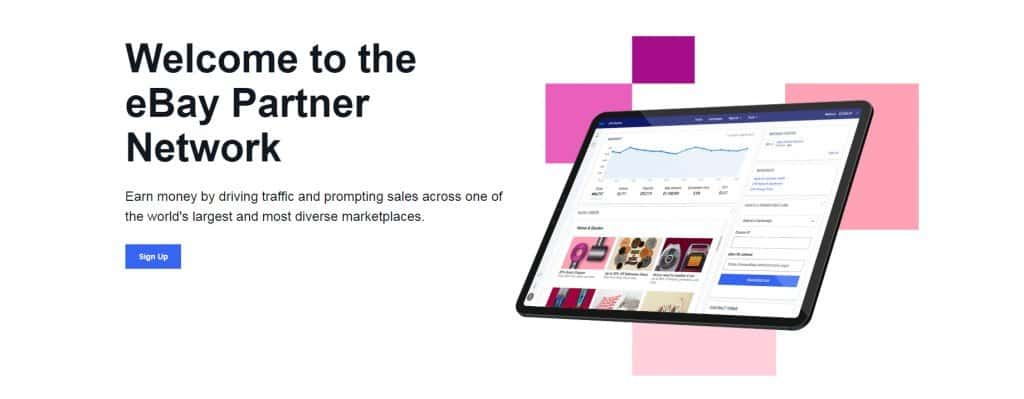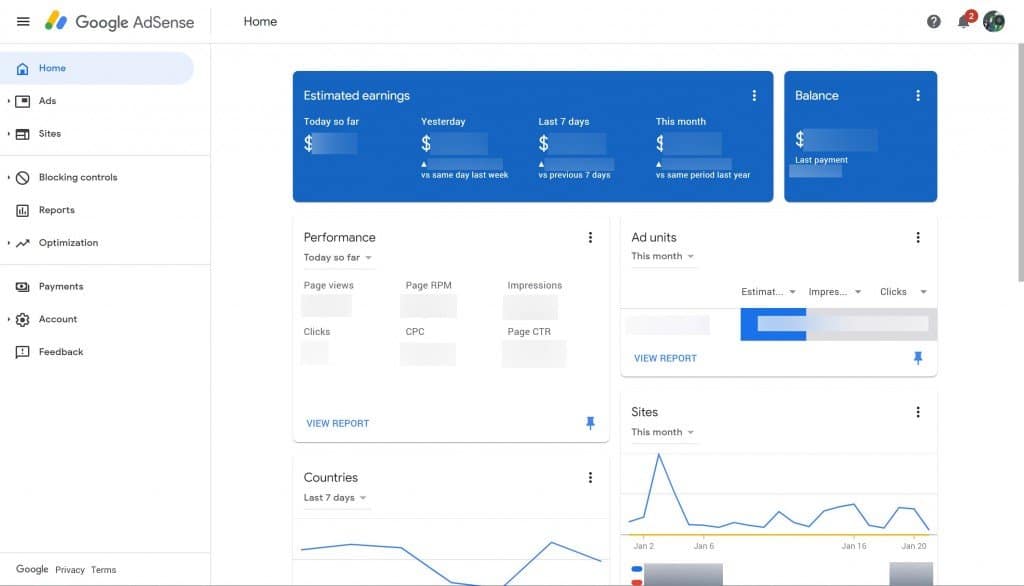Website monetization is literarily one of the most common passive income ideas of the century. It’s an income stream that allows almost anyone to earn, regardless of their lifestyle, profession, knowledge about the internet, etc. All you need is to build sustainable web traffic and activate your monetization scheme, such as showing ads on your WordPress blog.
Making unique and engaging content takes a lot of time. It begins with properly designing your blog and extends to consistency in the quality of your entire blog’s message. Hence, publishers may deserve some rewards for putting in their resources. And the only viable means of earning passively through free content-making is by monetizing the websites they are published.
Website monetization could be in the form of donations, affiliate marketing, request for membership, content sponsorship, and adverts placement.
This article will discuss the various #ad placement methods and how you can start showing ads on your #WordPress #blog. Click To TweetLet’s first consider what makes a website eligible to run ads.
Requirements for showing ads on your WordPress blog
Depending on your preferred method of placing ads on your website (to be discussed in detail later), your WordPress blog may be required to meet the following criteria or more to become eligible for ads placement.
- Professional design: Your website design and navigability are very crucial in any monetization process. WordPress blogs for showing ads must have a clear design that’s visually attractive to users, alongside a simple structure for flawless user experience. Your blog design is also required to be mobile-friendly and should enable your site to load easily on every device.
- Valuable traffic: The aim of showing ads on your website is to reach as many people as possible. And your ads can’t reach anyone that’s not going to visit your website. Your website must be at least three months old, according to most ad network companies, with traffic from varying sources, preferably from the location where the ads are targeted.
- Unique content: Having regular visitors on your blog is not as easy as having them for the first time. What brings back visitors to your blog is the content, and you must offer something original and useful to the readers. Your content should be organized and theme-based. It should focus on a specific area like tech, lifestyle, traveling, sports and etc.
 Ad network companies usually do not accept illegal or provocative content such as hacking tutorials, pirated or plagiarized content, pornography or adult materials, and illegal paraphernalia or drugs.
Ad network companies usually do not accept illegal or provocative content such as hacking tutorials, pirated or plagiarized content, pornography or adult materials, and illegal paraphernalia or drugs.
Google AdSense, for instance, would require you to be at least 18 years old and to include, on your WordPress blog, a privacy page, contact page, about page, and a disclaimer page, in addition to the above-mentioned requirements.
Methods of placing ads on your WordPress blog
To understand how the available methods of showing ads work, you may have to provide answers to the following questions. Whose advert do I want to run on my website, and how do I get and run them?
Your options include the use of network advertising where you contract a company to find advertisers and to place the adverts on your website automatically; and direct advertising where you source for advertisers and run all ads by yourself.
Based on your website niche, you may choose to mention certain products in your content and provide a link to buy them. This method of showing ads requires you to partner with the affiliate product promoters so you could receive a commission from every order placed through your promotion link.
1. Direct advertising
Inarguably the most lucrative method of showing ads on a website, direct advertising gives you the freedom to negotiate advert rate with ad buyers or brand owners willing to place ads on your website.
By dealing directly with the advertisers, you receive 100 percent of your advertising proceeds. You decide the advertising rates and how to receive payments. One huge relief this method of advertising brings to bloggers is the absence of uncertainty/worry about the number of clicks, conversion, and sales it may accumulate, which control how much you earn in other methods of showing ads.
You also have the freedom to choose the brands you want to work with and those you want to build a long-lasting business partnership with.
However, direct advertising is not cheap to start. It requires a significant amount of time, experience/connection, and patience to achieve. Most importantly, your website traffic and page authority determine a brand’s willingness to buy ads from your website and how much you could charge them.
How to place direct ads on your website
The administrative procedure for placing direct ads is the major challenge with this method. Direct advertising requires you to build significant web traffic, choose a specific niche for advertising (preferably related to the web content), create a media kit, and to advertise your website to ad buyers.
Direct ads are usually placed strategically on your website using ad management software, with an adjustable running algorithm at the back end. However, you can achieve this by using a WordPress plugin for placing and managing ads. The procedure is usually the same for most plugins; they are basically widgets.
To place direct ads on your website using a WordPress plugin, the steps include:
-
Design the custom ads
-
Choose a suitable ad management plugin
-
Install and activate the plugin on your WordPress site
-
Upload your ads
-
Manage your ads using the plugin
2. Affiliate marketing
Affiliate marketing is considered the fastest and easiest means of earning money through ads placement. It requires you to sell other people’s products on your website for a small reward. Affiliate marketing requires the publisher (you) to join an affiliate program and to promote the affiliate product or service on your website for an agreed commission. This is achieved by placing the affiliate links, banners, or text ads on your blog so you can turn your organic traffic into referrals. The requirements for joining an affiliate program are not too tasking; hence almost anyone who owns a website/blog can join.
The basis and earning method in affiliate marketing varies but strictly performance-based. Most times, the product owners pay publishers on a PPS basis (pay-per-sale). They also pay on a PPA basis (pay-per-action) and based on CPC (cost-per-click) or CPM (cost-per-mile). The commission received from selling affiliate products could be as much as 50 percent of the actual product price.
You can also use an ad management plugin to insert banners or text ads in your affiliate marketing campaign.
Steps to start affiliate marketing
Choose a niche (focus on what you love)
Affiliate marketing requires you to focus on one niche so you could drive as much traffic as possible while also being more professional. It’s important to choose an area you love and have passion for. The idea is to build traffic easily. Avoid any niche you have to learn from scratch or a niche that would make you struggle to engage your audience.
Define your traffic source
Figure out your possible source of traffic based on your website niche. Are your readers mostly mothers or teenagers? This will help in the selection of your affiliate product. You don’t want to promote baby shoes to teenagers, for instance. Your website niche defines who visits your website, and this is helpful for your next step.
Choose suitable affiliate programs
Find out about the affiliate programs you want to join by looking at their products. Ensure they are good for your audience and subscribe to the companies selling your approved products. Some of the best affiliate marketing companies with many affiliate programs include eBay Partner Network, Amazon Associates, CJ Affiliates, and Commission Factory.
Build your funnel and increase the lifetime value
Include marketing strategies that allow you to harvest the emails of your website visitors. This allows you to interact with your audience even when they are not on your page. Try to include testimonies, influencers, and possibly build a landing page where you can further talk about your products. Your affiliate marketing content should not fully focus on selling to your audience. There is a need to include information that would be useful to your audience.
3. Network (Programmatic) Advertising
Network or programmatic advertising is a method that works just fine for everyone – fresh bloggers and established bloggers. Network or programmatic advertising offers something different with its automated process of buying and selling. This method eliminates the stress of looking for media buyers, as seen in direct advertising and also the search for a suitable affiliate program. It matches your audience with the relevant ads but would require an action from the user to acknowledge the advertising.
A high level of technology, which includes a machine-learning algorithm, is used in programmatic advertising. The algorithm studies your audience using their online behavior, such as internet search, to understand them better, and deliver highly targeted ads. As a publisher, you also have to make input by choosing the number of ads that appear on your pages. You are allowed to select the ads text, content, color, and even means of display (banner, video, interactive, pop-ups, etc.) while setting up programmatic advertising on your website.
Generally, network advertising is mostly preferred by publishers because it requires little or no investment, easy to start, and requires no task of finding ad buyers or negating with them.
Top 10 Ad network for WordPress bloggers
- AdSense
- Amazon Native Shopping Ads
- net
- Adversal
- Propeller Ads
- Monumetric
- PopAds
- Infolinks
- RevContent
- Bidvertiser
Launched in June 2003, Google AdSense is currently the largest ad network company, with over 10.8 million live websites currently using it to show ads. AdSense is free to set up and preferred by most publishers. The parent company Google pays more than $10 billion to its publishers yearly.
AdSense handles all the work of finding advertisers, fixing ad rates, and intelligently placing the ads according to your website visitor’s interest. But this is not for free. The search giant keeps 32 percent of the advert proceeds while the remaining 68 percent goes to you.
How to add AdSense to your WordPress blog (a four-step guide)
Step 1: Set up your WordPress blog
Setting up your blog includes ensuring that they meet AdSense eligibility requirements and to have them fully functional for swift web content delivery and proper engagement of your audience. You don’t want to apply for AdSense when your website is still under construction, even if it was once working or have been live for years.
Step 2: Apply for AdSense
With your website perfectly running in compliance with all the eligibility criteria, it’s time to apply for Google AdSense. Click on the Get started button and complete the registration process.
After registering successfully, you need to wait for Google to send you an email notification about the status of your application: if it’s successful or not. This may take up to 8 hours. Move on to step 3 once you receive an email that you’re successful.
Step 3: Configure the ads you want to run
As soon as you log in to your AdSense account, you’ll be taken to your AdSense dashboard, where you can choose the type of ads you want to run on your website. Click on the Content menu for a dropdown, select Ad Units, and choose the advertisement type, style, size, etc.
Step 4: Copy and paste your AdSense code onto your WordPress blog
At the bottom of your AdSense dashboard page, click the “save and get code” button as soon as you’re done with the ad configuration. This will prompt Google to generate a code peculiar to your setting and website. Copy the code.
Go to your WordPress dashboard and click on Appearance >> Widgets. Open your Custom HTML widget, paste the code in the content section, and click on the blue button.
Conclusion
Showing ads on your WordPress blog is the easiest way to recoup part of the resources spent in making content and designing your website, at least at the early stage. You may choose to begin with programmatic advertising (preferably AdSense) since it doesn’t require you to worry about whose ads you need to show and how. And that doesn’t rule out the option to include direct advertising, affiliate marketing, and other methods of placing ads on a website available to you. A website can show ads using a combination of all the methods mentioned in this article, but you can only partner with a single ad network company in programmatic advertising.
Most people believe that showing ads on your website would help to sustain and grow it. Do you think it’s true? Please share your challenges and experience with us in the comment box below.





